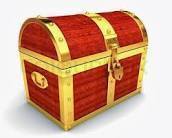Guinea

Here is a comprehensive financial historical report on Guinea and its currency, the Guinean franc (GNF), in International English:
Financial Historical Report of Guinea
Basic Data
-
Country ISO Code: GN
-
Official Language: French
-
Language ISO Code: fr
-
Current Official Currency: Guinean franc
-
Currency ISO Code: GNF
Currency History in Guinea
-
Before independence, Guinea was part of French West Africa and used the CFA franc, a common currency for French colonies in Africa created in 1945.
-
Guinea gained independence in 1958 and introduced its own currency, the first Guinean franc, in 1959, replacing the CFA franc at par.
-
The first Guinean franc was subdivided into 100 centimes, though centime denominations were never issued or used in practice.
-
Coins issued included 1, 5, 10, and 25 francs (aluminium bronze and later cupronickel), and banknotes ranged from 50 to 10,000 francs.
-
In 1971, the franc was replaced by the Guinean syli at a rate of 1 syli = 10 francs, subdivided into 100 cauris. The syli was introduced to stabilize the economy but suffered from rapid depreciation and was unpopular.
-
In 1985, the syli was replaced by the second Guinean franc at par, which remains the official currency today, issued by the Central Bank of the Republic of Guinea (Banque Centrale de la République de Guinée).
Details of the Current Currency
-
Singular Name: franc
-
Plural Name: francs
-
Subdivision: 1 franc = 100 centimes (centimes no longer used)
-
Issuing Authority: Central Bank of the Republic of Guinea
-
Common Coin Denominations: 1, 5, 10, 25, 50 francs (coins are rarely used currently)
-
Common Banknote Denominations: 1,000; 5,000; 10,000; 20,000; 50,000 francs
Economic and Monetary Context
-
The Guinean franc floats freely on international currency markets, unlike the CFA franc used by many neighboring countries, which is pegged to the euro.
-
Guinea’s economy depends heavily on mineral resources such as gold, diamonds, iron ore, and bauxite.
-
The country has faced economic challenges including political instability and health crises like the Ebola outbreak, which affected growth.
-
Inflation and currency depreciation have occurred, especially in the 1980s and 1990s, prompting currency reforms including redenominations.
-
Despite challenges, the Guinean franc is considered relatively stable compared to some regional currencies.
Currency Features and Usage
-
Banknotes feature cultural and historical symbols of Guinea and include modern security features.
-
Coins are rarely used in everyday transactions due to inflation and the low value of smaller denominations.
-
The Central Bank manages monetary policy aiming to maintain stability and support economic growth.
Current Status
-
The Guinean franc is the sole legal tender in Guinea and is actively used for all commercial, fiscal, and financial transactions.
-
As of mid-2023, the exchange rate is approximately 1 USD = 8,586 GNF.
This report summarizes the evolution of Guinea’s currency from colonial CFA franc use to its current independent currency, the Guinean franc, highlighting its historical context, monetary reforms, and present-day economic role.
If you wish, I can provide this report translated into Portuguese or French.
- https://www.investopedia.com/terms/g/gnf.asp
- https://en.wikipedia.org/wiki/Guinean_franc
- https://tradingeconomics.com/guinea/currency
- https://www.elevatepay.co/br/currency-encyclopedia/gnf-guinean-franc
- https://www.elevatepay.co/currency-encyclopedia/gnf-guinean-franc
- https://globalfinancialdata.com/guinea
- https://www.atlmoney.com/blog/5-surprising-facts-you-need-to-know-about-guineas-currency/
- https://www.wikiwand.com/en/articles/Guinean_franc
- https://blog.remitly.com/en-gb/currency/guinean-franc/
 Nilton Romani
Nilton Romani
